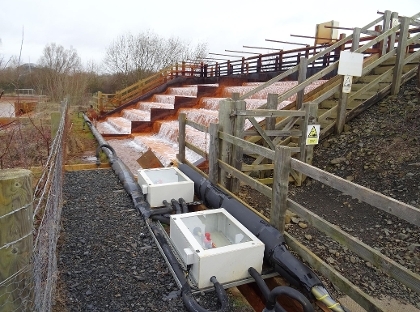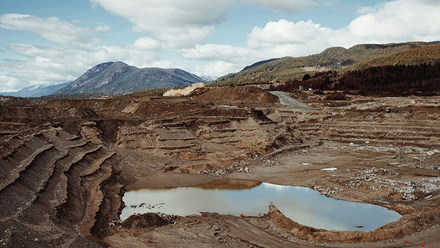Treating mine waters sustainably
The Coal Authority in Scotland is enhancing treatment of waters from a closed mine to reduce energy, water and chemical usage.

Technical developments at the Frances colliery site in Dysart, Scotland, are said to improve the sustainability of the mine’s vital water treatment scheme. The Coal Authority claims the upgrades to the semi-automated chemical dosing plant will result in an immediate 15-20% reduction in chemical usage and a 75% reduction of potable water, significantly reducing the site’s whole-life costs and environmental footprint. The upgrades will also further reduce emissions by cutting the number of sites needed.
‘As the mines in the East Fife coalfield closed, the pumps used to keep them dry were switched off,’ says Thomas Mills, Head of Environment at the Coal Authority. ‘Over time, the mine water levels have recovered and picked up naturally occurring minerals from the rocks, such as iron, which although not harmful to people, can impact the eco-system of surface water courses.
‘Our scheme helps to control water levels across the mining block, ensuring rising mine water in the historical underground coal workings is effectively managed to prevent uncontrolled discharges at the surface.’
The system relies on chemical dosing to reduce iron levels, which can now treat 160L a second – double than previously capable. Mills explains, ‘Although mine water is often described as acidic, that is quite different to saying that the mine water is an acid – i.e. it has a low pH and is corrosive. The large majority of mine waters that are discharged from historical underground mines in Scotland have a pH of between six and eight. They are, in fact, circum-neutral.
‘It is more accurate to say that this raw mine water has limited alkalinity and is iron rich, and the chemistry is influenced by tidal flows,’ he adds. ‘The chemical dosing provides additional alkalinity, enhancing our treatment and separation process, which occurs through the scheme’s original “passive” cascades and settlement lagoons, where the iron drops out – originally through natural processes alone. The clean water is gravity fed to the nearest water course, in this case the Firth of Forth.’
The plant refurbishments involve replacement and improvement of the existing chemical dosing equipment, new bulk storage tanks, inclusion of heating coils and temperature sensors, new pipework with thermal insulation, and mechanical and electrical upgrades. Increased usage of controllable duty-assist pumps to operate the new flow-phased regime enhances the efficiency of mine water treatment and offers sustainable operation.
The Coal Authority is also implementing operational changes, from ‘slug’ dosing to a 24-hour treatment, which will stop flushing cycles, and therefore reduce water consumption by more than half.
The added features enable temperature control, automated plant shutdown during critical situations and telemetry controls to meet regular operational demands and emergency needs.
Mills says they envisage further efficiency savings through continuous monitoring and evaluation of the operation, while maintaining the discharge consent for treated water granted by the Scottish Environment Protection Agency.







